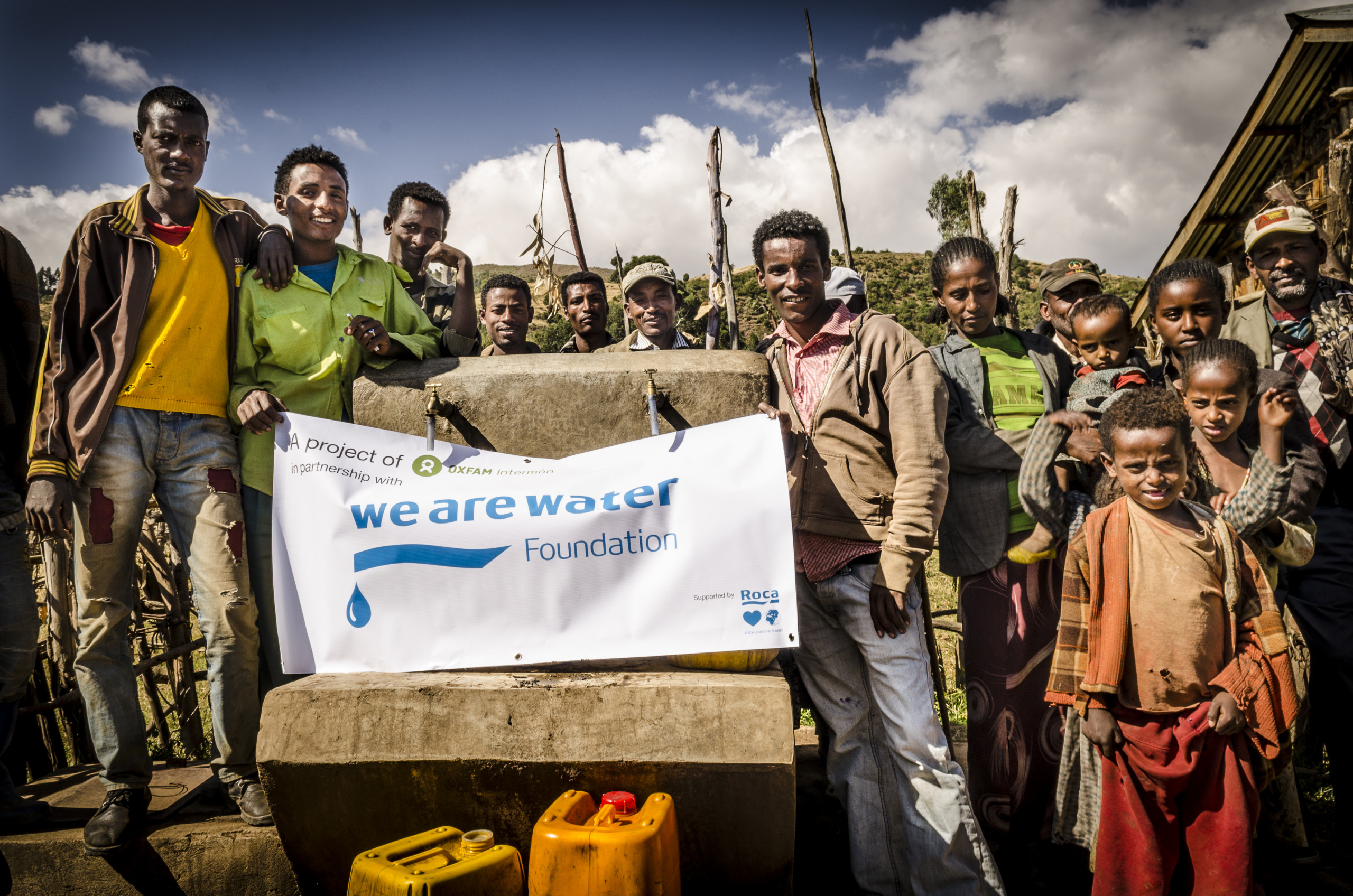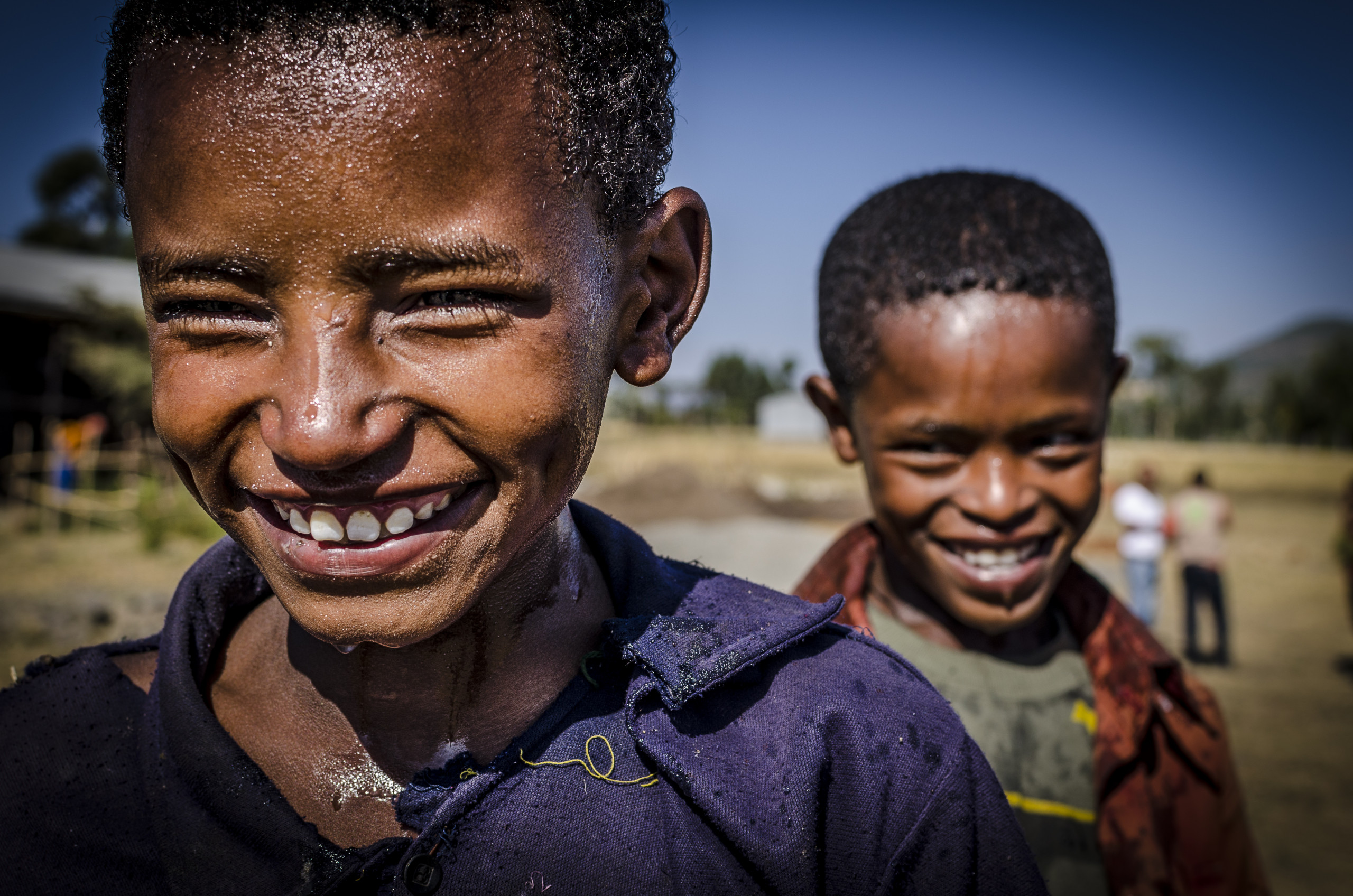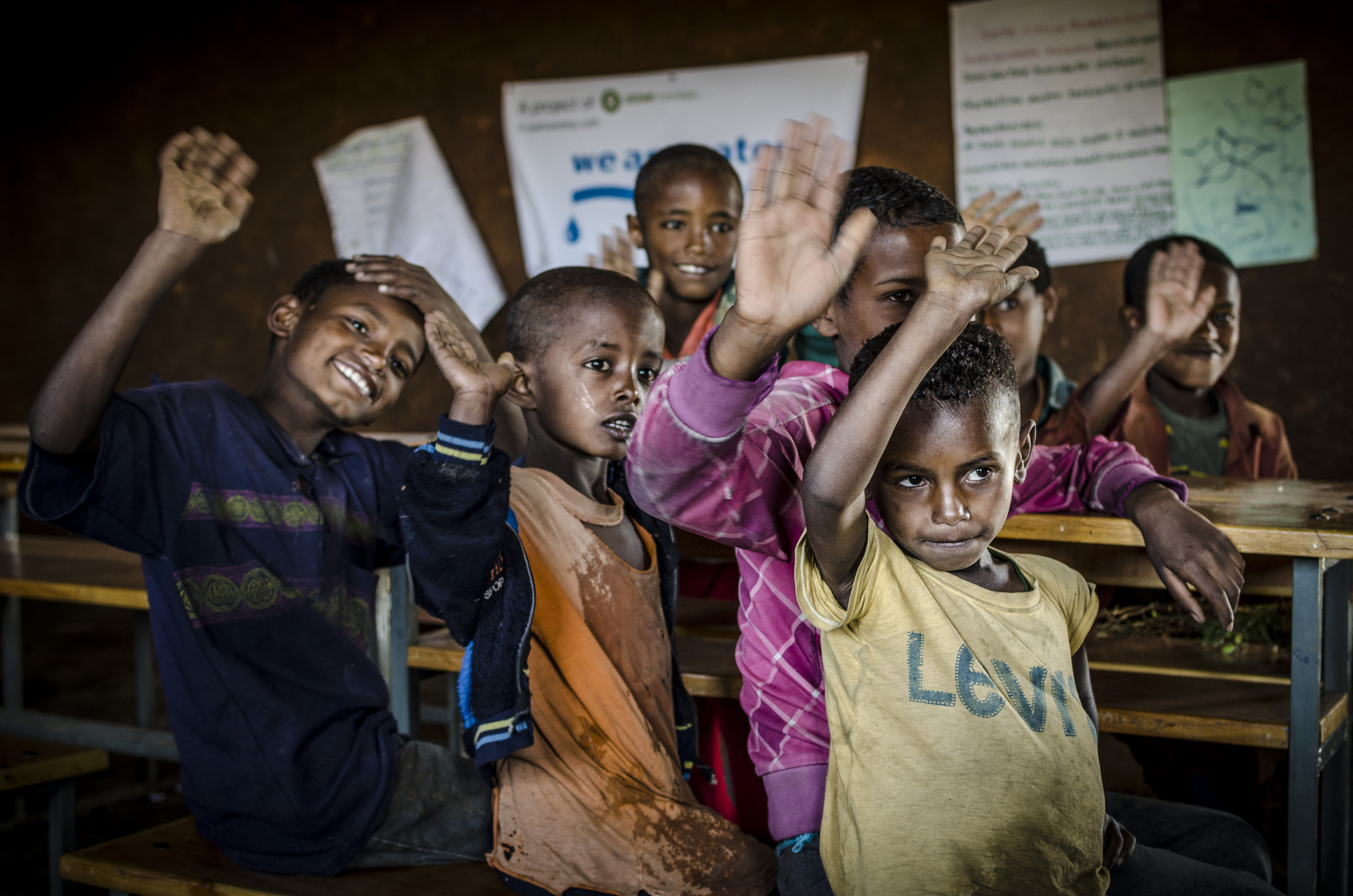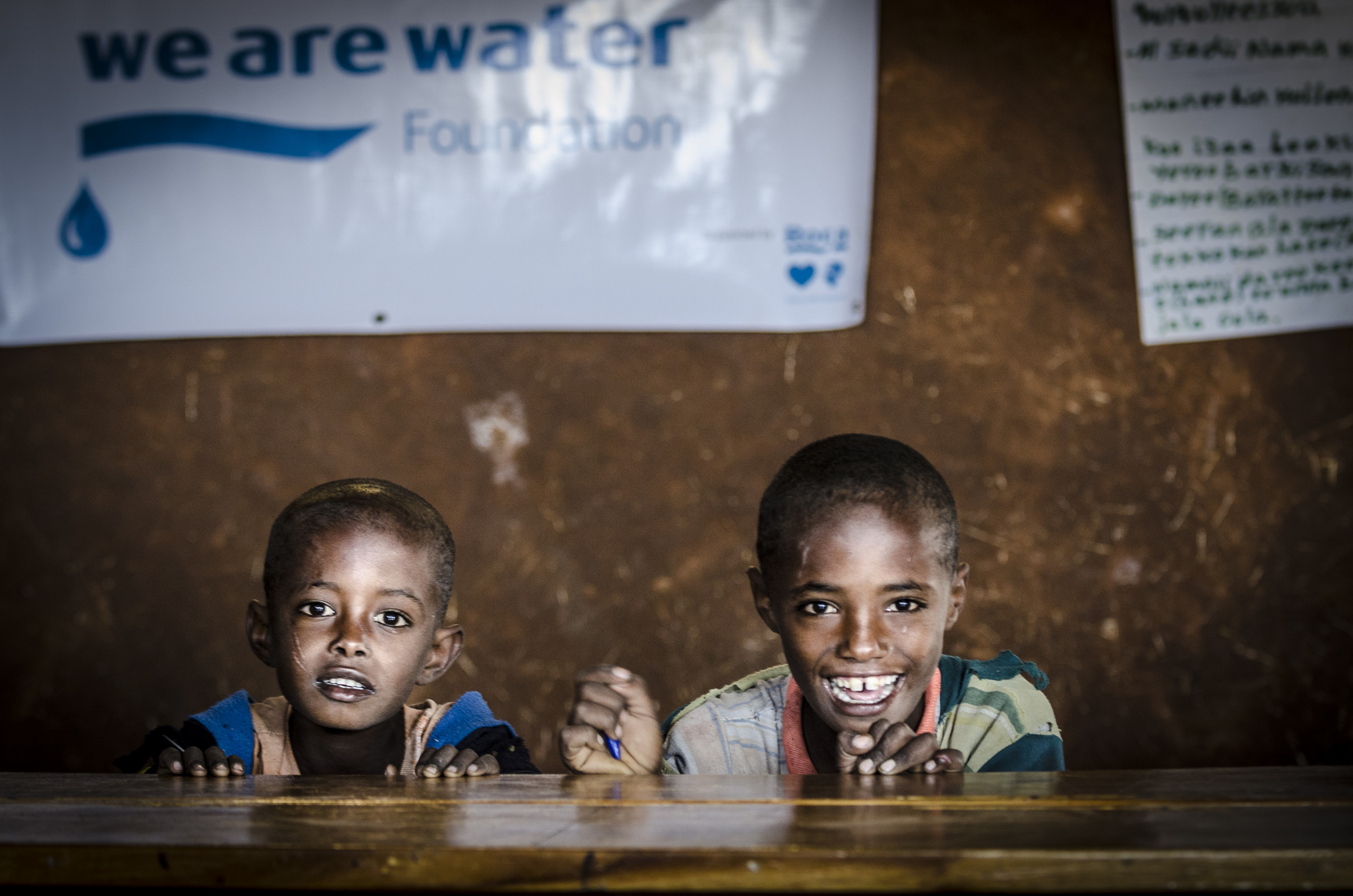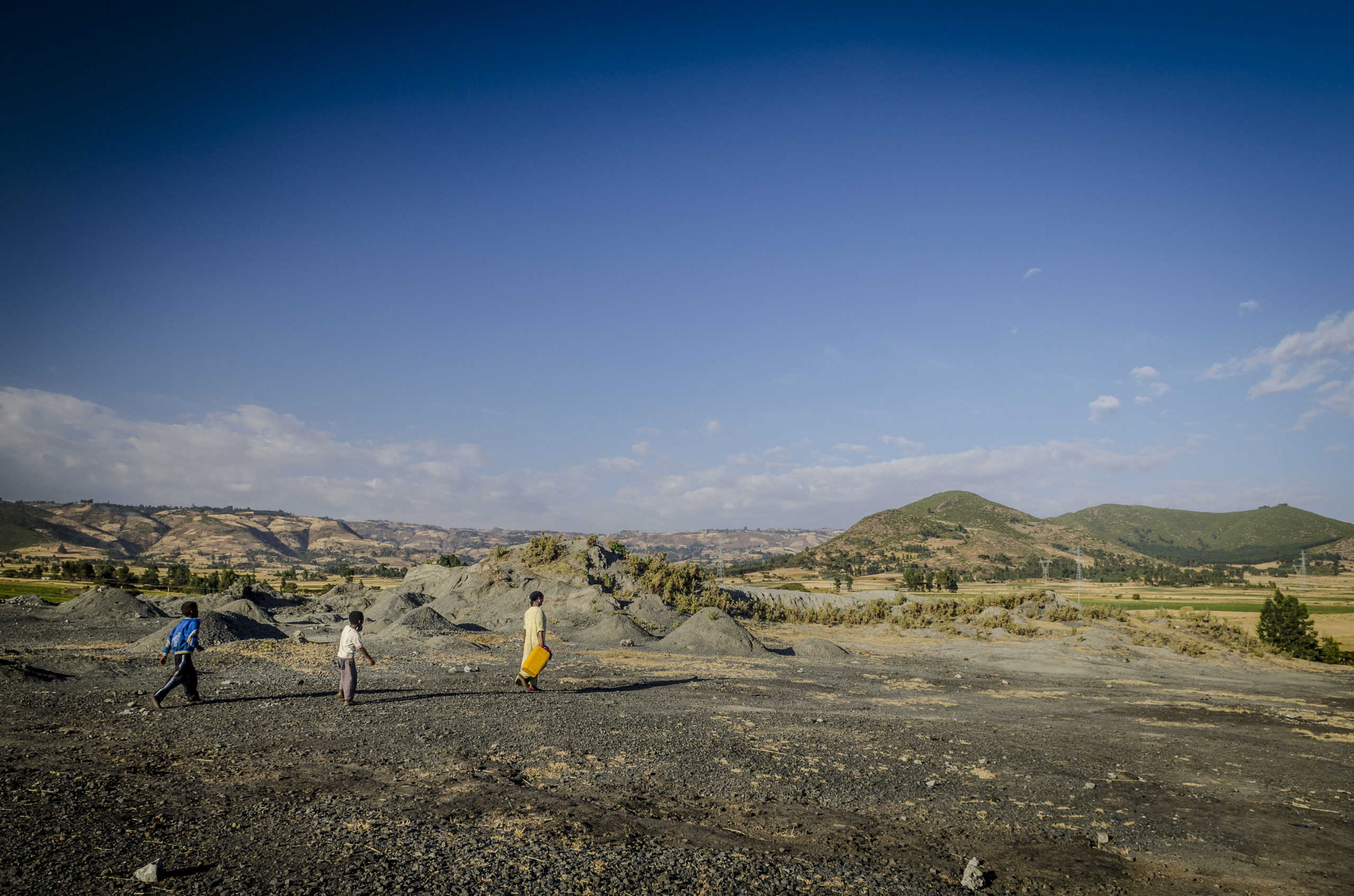Woredas (districts) of Tena and Zeway Dugda in the Oromiya region and Cheha and Bolosso Sore in the Southern Nations, Nationalities and People’s region, Ethiopia
In collaboration with

2011
We build springs and dug wells and promote hygiene and sanitation with mass education campaigns and home visits in the poorest regions.
Objectives
- Manual construction and digging of springs and wells.
- Biological and physical protection and development of natural resources around the water sources and pipes.
- Promotion of hygiene and sanitation, and revitalisation of the community.
Beneficiaries
50.300 direct

On the ground
Lack of drinking water and sanitation infrastructure. Poverty, unhealthy conditions and lack of knowledge about hygiene. Prejudicial to the women and girls who have to go and fetch water and are unable to attend school.
In the Oromiya and Southern Nations, Nationalities and People’s regions of Ethiopia, there is limited access to drinking water and basic sanitation. Contaminated water leads to death and disease, and harvests are entirely dependent on rainfall, which is why they are insufficient. Women and girls have to travel huge distances to fetch water, and they are unable to go to school or participate in community life. Springs and wells need to be built, natural resources need to be protected, and hygiene and sanitation need to be promoted in the area.
Ethiopia is one of the poorest countries in the world and is hit by frequent droughts and famines. 84% of the population lives in rural areas and depends on subsistence farming. Only 24% of the population has access to drinking water, in spite of the large number of water resources available in the country, particularly in the subsoil, and only 13% have basic sanitation services (according to the 2006 United Nations Development Programme report). These figures are at their lowest in rural areas.
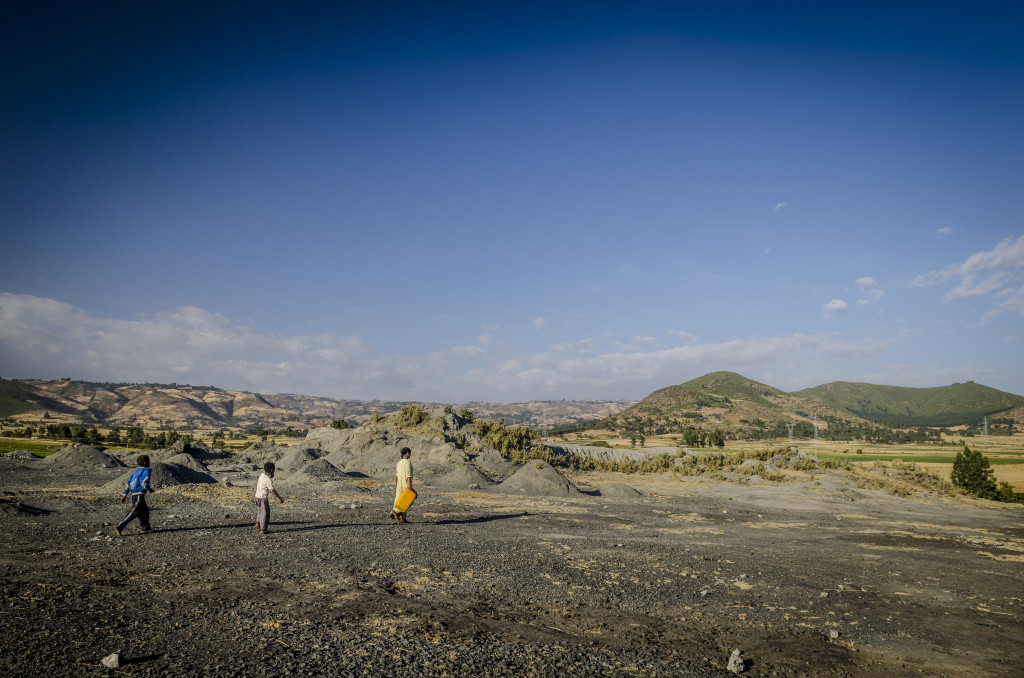
Due to this situation, hundreds of people fall ill and die daily as a result of drinking contaminated water, and little food is produced since the harvests are entirely dependent on rainfall and livestock die from diseases related to poor water quality. This situation is also the cause of a serious social problem, particularly in rural areas, as women and girls have to travel huge distances to fetch water; consequently, they have no time to go to school or participate in community life.
The most disadvantaged areas
The Oromiya and Southern Nations, Nationalities and People’s regions cover the central and south-western parts of Ethiopia. Together, they cover a surface area of 466,359 km2, almost half the country, and are home to some 37 million people, over half the total population of Ethiopia. These regions are the most lacking in terms of availability of drinking water, with far less access than the national average.
The main economic activity in the area is the production of crops and raising of livestock. The majority of the community uses unprotected sources and rivers to obtain water for domestic use. The sources are shared by animals and humans alike, with the resulting health risk. Furthermore, the average amount of time spent looking for water from unprotected sources varies between 20 minutes and one hour per journey, and average water consumption in the majority of kebeles (villages) is some five litres per person per day, which amounts to 25% of the minimum recommended amount.
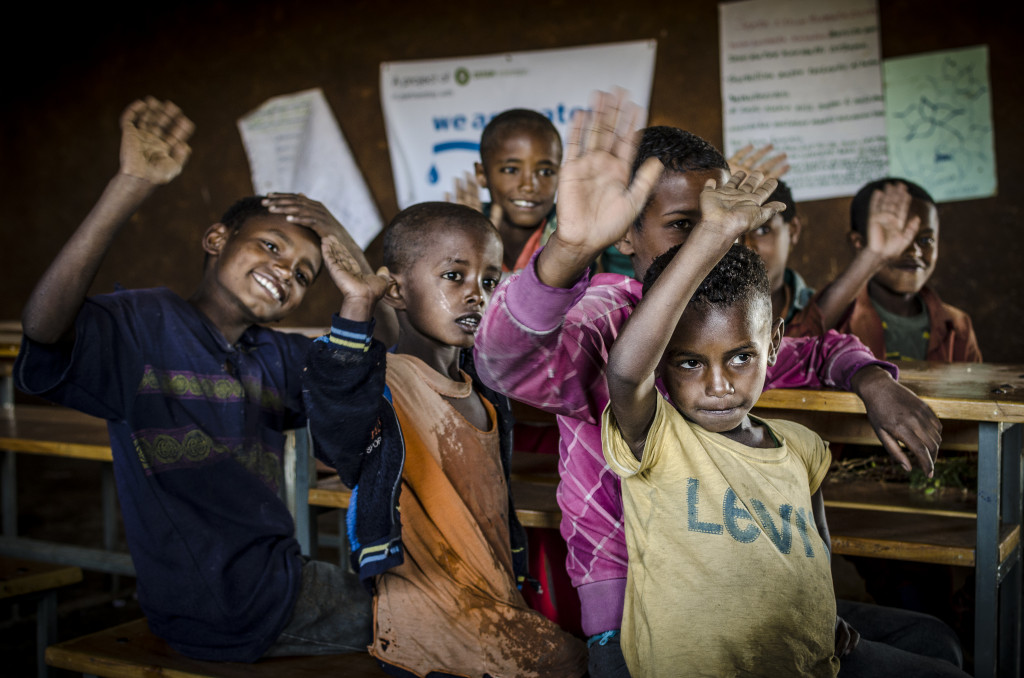
In detail
The solution is to construct infrastructure to extract water from the subsoil and make it accessible to all Ethiopians. The drawback is that there is a lack of material, financial and human resources. The Ethiopian Government has drawn up an ambitious programme that seeks to achieve 100% water accessibility by 2012. Nevertheless, there is a discrepancy between the needs of the country and the capacity of the government to meet them. Intermón Oxfam has been working in Ethiopia since 1989 in a number of fields and geographical areas, and one of its main objectives is to make drinking water available to the population.
The Oromiya and Southern Nations, Nationalities and People’s regions cover the central and south-western parts of Ethiopia. Together, they cover a surface area of 466,359 km2, almost half the country, and are home to some 37 million people, over half the total population of Ethiopia. These regions are the most lacking in terms of availability of drinking water, with far less access than the national average.
The main economic activity in the area is the production of crops and raising of livestock. The majority of the community uses unprotected sources and rivers to obtain water for domestic use. The sources are shared by animals and humans alike, with the resulting health risk. Furthermore, the average amount of time spent looking for water from unprotected sources varies between 20 minutes and one hour per journey, and average water consumption in the majority of kebeles (villages) is some five litres per person per day, which amounts to 25% of the minimum recommended amount.
The project is being carried out in the woredas (districts) of Tena and Zeway Dugda in the Oromiya region, and Cheha and Bolosso Sore in the Southern Nations, Nationalities and People’s region. The main objective is to improve access to water and hygiene services, thus also improving the health of the communities and saving the women and girls time and effort that could otherwise be spent on educational, social participation and development activities. It is also necessary to ensure the sustainability of the improvements through the establishment of focus groups (made up of members of the water committees, technical corps, local government officials and local partner employees). A further objective is to improve transparency and management among government officials and other actors in the water sector through political actions.
As to the creation of infrastructure, the project is based on the construction and digging of springs and wells and the biological and physical protection and development of natural resources around the water sources and pipes. In order to promote hygiene and sanitation, mass education campaigns will be launched and home visits will be made, making use of information, education and communication material. The team of health promoters will be involved in these actions. The construction of traditional pit latrines, essential to meeting the hygiene objectives, will be promoted.
The project also seeks to encourage the participation of local communities and, in particular, committee boards and their teams of experts. At the same time, training activities will be undertaken and tools and equipment will be distributed for the upkeep of the system. Two training courses and two visits will be organised to enable 50 people from the project team and staff from the various local government bodies (health, water, agriculture, education and women’s affairs, as well as the management office) to exchange experiences.
The programme will directly benefit 30,303 people (14,802 men and 15,501 women) living in the four woredas, improving access to clean water and sanitation. In addition, through the training and creation of contacts, 50 people from four local partner bodies and four government institutions in the district will benefit directly from participation in training courses, workshops and exchanges of experience. It is estimated that there will be more than 20,000 indirect beneficiaries.


